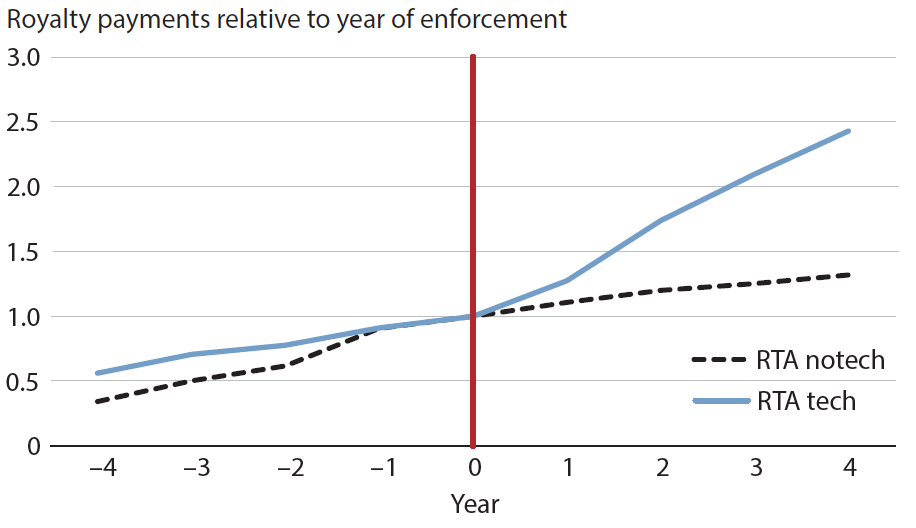Trade Deals May Encourage Technology Transfers
Regional trade agreements (RTAs) are ostensibly designed to increase trade between the signatory nations. But how important are these deals to protecting intellectual property rights (IPR) among the trade partners?
In a September Economic Synopses essay, St. Louis Fed Senior Economist Ana Maria Santacreu and Research Associate Jesse LaBelle examined the critical role of IPR provisions in RTAs.
“Protecting IPR is especially important for innovative countries, which have the most to lose from IP theft,” they wrote. “Less-innovative countries may also benefit from IPR to the extent that it encourages the transfer of technology from one country to another (technology transfer).”
IPR and Trade Deals
Before the 1995 formation of the World Trade Organization, 78% of RTAs didn’t mention IPR “or did so very superficially and contained no actual protections,” the authors wrote. However, from 2015 to 2020, 94% of trade deals provided strict IPR protections.
Innovation leaders like the U.S. have pushed for stronger IPR safeguards in such trade deals, they explained, noting that a 2019 study put the estimated value of IPR infringement at $509 billion, or 3.3% of global trade, in 2016.
The authors pointed out how both developed and developing nations can benefit from IPR provisions:
- Adequate enforcement of IPR will benefit innovators, who will then invest more in innovation.
- Innovators may only be willing to transfer technology abroad if they have such IPR protection.
Dynamics of Technology Transfer
Do regional trade deals that offer IPR provisions affect the flow of technology to trade partners?
Santacreu and LaBelle looked at international technology licensing to determine how these provisions affect technology transfers. Under such licensing deals, the patent owner transfers the right to use the patent and related production knowledge in exchange for a royalty.
The figure below shows the evolution of royalty payments from the licensing deals between developed and developing countries. It displays the trend before and after the enforcement date for RTAs that had IPR provisions and those that lacked such provisions. Payments have been indexed so that “1” indicates their level at the date an RTA is enforced.
The Evolution of Technology Transfer Following Regional Trade Agreements

SOURCE: Santacreu, Ana Maria. “Intellectual Property Rights, Technology Transfer and International Trade.” Working Paper, Federal Reserve Bank of St. Louis, July 2021.
NOTES: “RTA notech” indicates RTAs without IP provisions; “RTA tech” indicates RTAs with IP provisions.
The figure shows that once an RTA goes into effect, the slope of the two trends sharply diverges, the authors observed.
“Countries that include IPR provisions in an RTA see a sharp increase in royalty payments, while others just continue to see the same trend as before the agreement was enforced,” they wrote.
Benefits of Protecting IPR
Once mainly used for increasing trade, RTAs also have become a significant tool to safeguard intellectual property rights, the authors explained.
“These trade agreements directly benefit innovative countries but also are associated with more technology transfer from developed to developing economies,” they wrote. “And technology transfer is an important source of economic growth in developing countries, which tend to be less innovative.”
Citation
ldquoTrade Deals May Encourage Technology Transfers,rdquo St. Louis Fed On the Economy, Jan. 25, 2022.
This blog offers commentary, analysis and data from our economists and experts. Views expressed are not necessarily those of the St. Louis Fed or Federal Reserve System.
Email Us
All other blog-related questions

